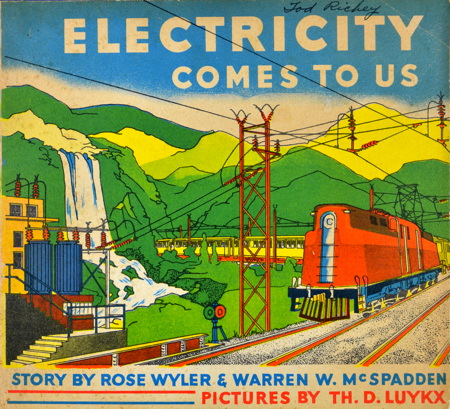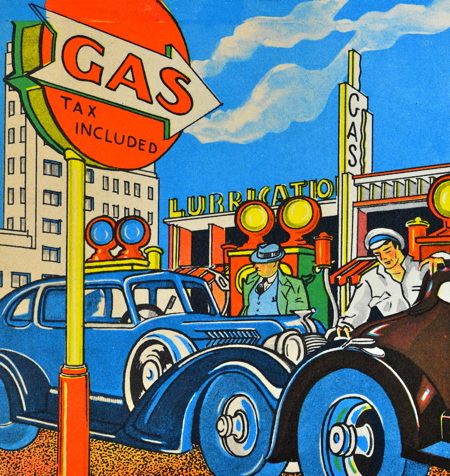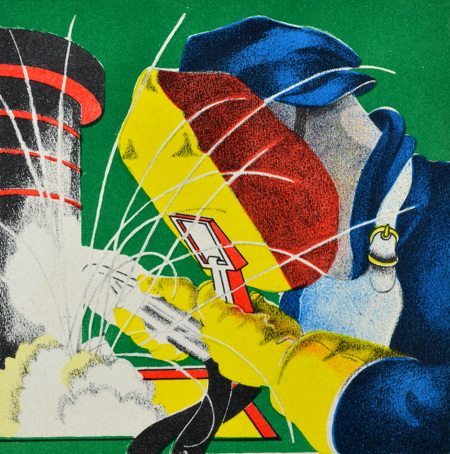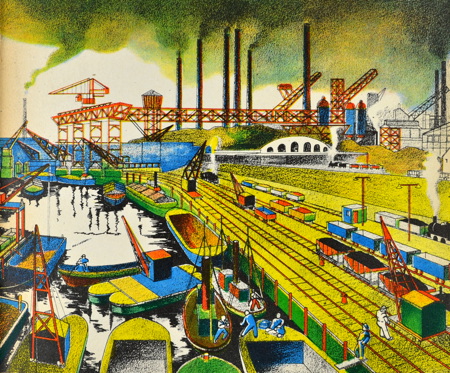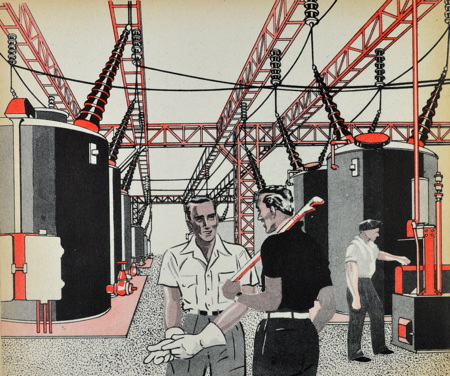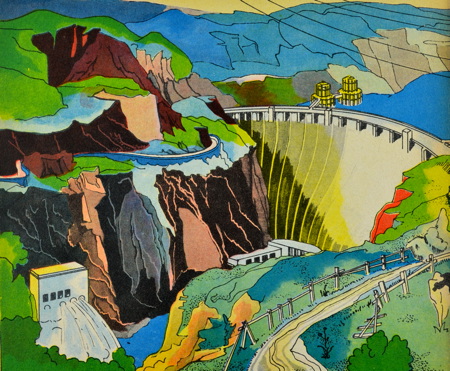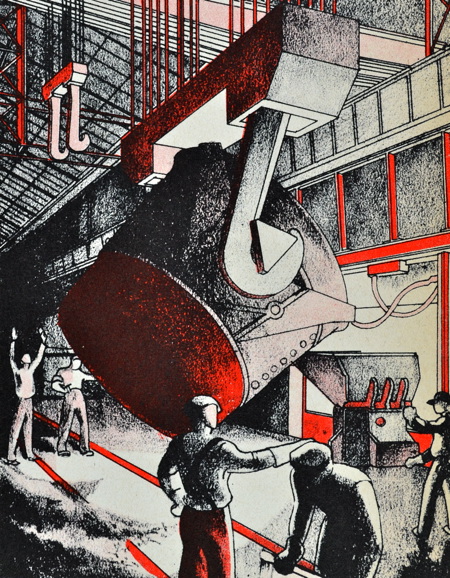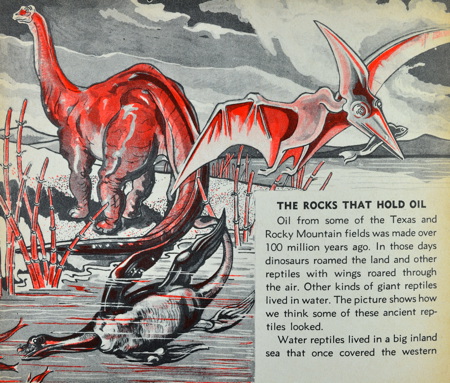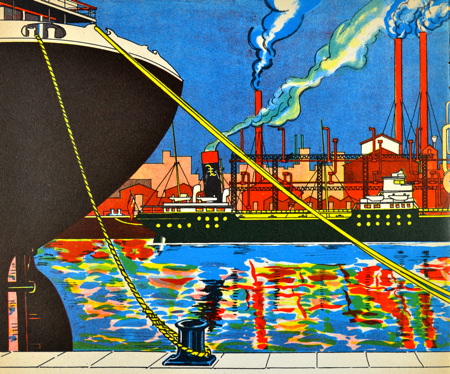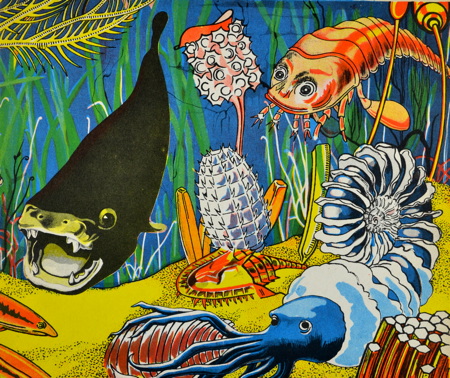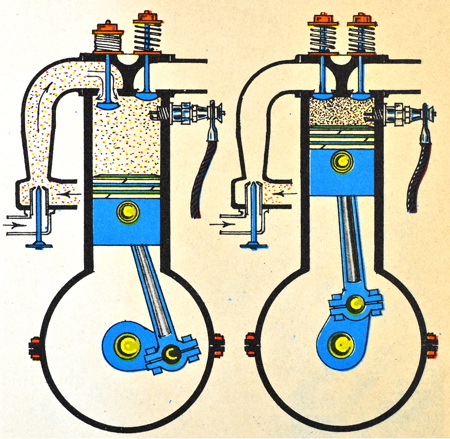Scanning Around With Gene: Teaching Kids About Industry

Kids grow up these days taking a lot of things for granted. The electricity that comes out of the wall, the gasoline in our cars and the steel in our skyscrapers are all just there and have been for so long it doesn’t seem like any big deal. I don’t even know if we teach kids about the history of these and other industries — much of it would seem like ancient history I suspect, and does it really matter how electricity is made or what goes on in a steel mill? Kids these days are probably a lot more interested in how iPhones are made.
But in 1939 when the illustrations in this installment were published, there was still a lot of fascination with big industry, and we were proud as a nation at the infrastructure we had built for these things. Today’s images come from a series of three books published by the George Duplaix Company in New York: “Oil Comes to Us,” “Electricity Comes to Us,” and “Steel.” The authors are different for the three books, but the illustrator, one Th. D. Luykx, is the same, and each book follows the same format. Click on any image for a larger version.
I tried to find out more about Luykx, but a rudimentary Google search only brought up references to these books and nothing else that I could find. Could be these were a one-off effort, at least of books where credit is given to the illustrator.
And I can’t really tell in which medium Luykx worked in — the illustrations are brightly colored and, in many cases, limited to two colors, red and black. The high contrast and stark lines indicate a mechanical rather than illustrative process; there are halftones in the printing, and some colors seem slightly out of registration on close inspection, so I suspect each color was produced as a separate layer in whatever process Luykx used.
The books are pretty straight forward, telling in pictures and limited text the stories of how we make steel, how we drill for and refine oil, and how electricity is produced and brought to the home.
Like so many printed products of the time, full color is limited to certain spreads, and the artists was limited to two colors for many illustrations. These make for the more interesting work as far as I’m concerned.
Illustrating kids’ books is always a challenge, especially when dealing with technical topics. Luykx did a good job of being technically accurate and fairly detailed, but general enough to appeal to kids with limited knowledge of the subject matter.
I’m not sure why I was so taken by these three books — together they make a wonderful set and I have to wonder why the publisher did not do more (at least no others show up on Google). Perhaps it was a series that just didn’t take off.
But I’m glad I found them and will keep my eyes open for any additional work by Luykx. It would be interesting to see if he did fine art as well. His technique seems very unique to me.
This article was last modified on May 5, 2023
This article was first published on May 11, 2012




